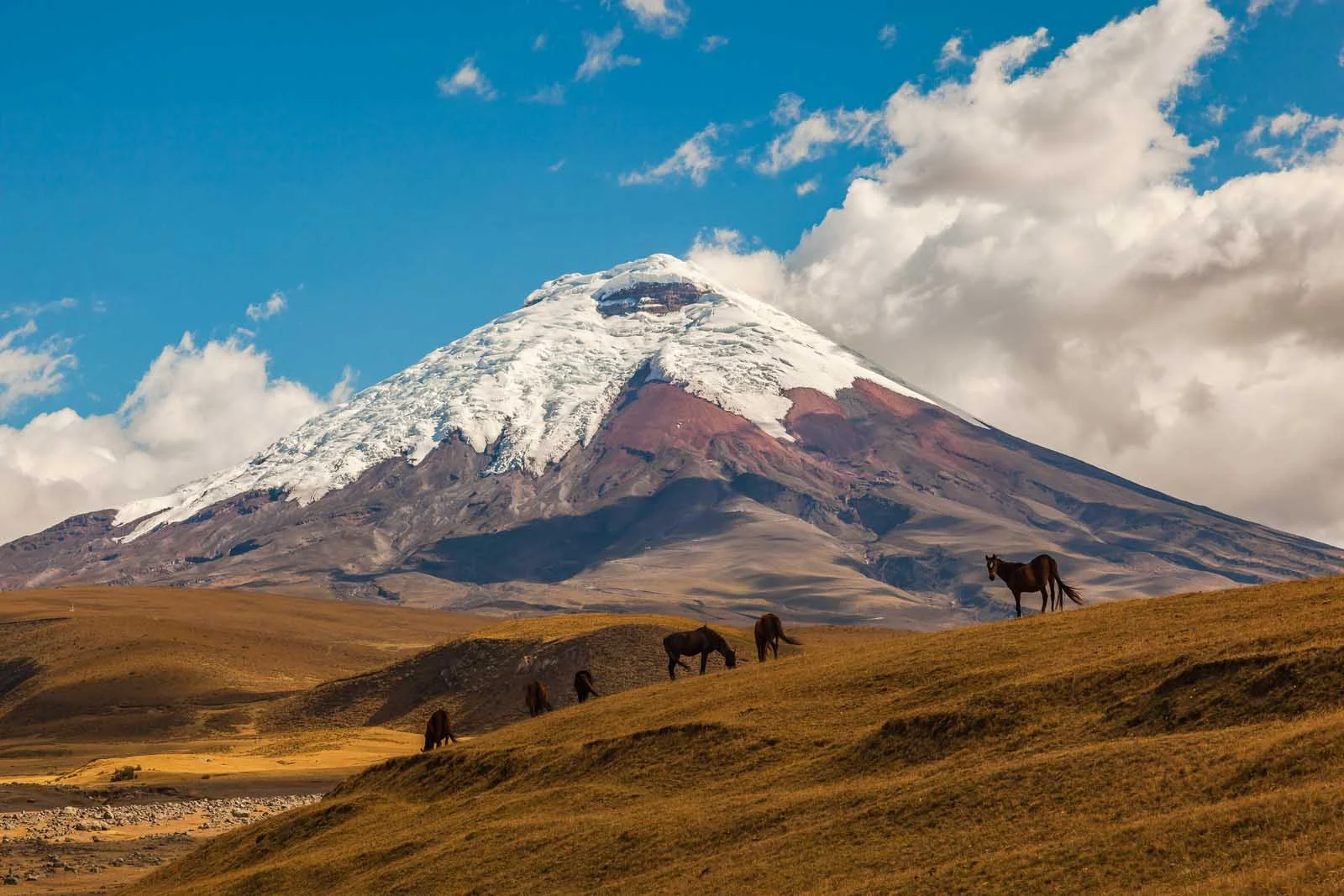
Cultural Experiences in Ecuador and Peru | Travel Blog
Experiences in Ecuador and Peru reveal rich cultural traditions and vibrant history. Both countries celebrate diverse customs, festivals, and ancient heritage. Where you will enjoy unique food, music, and artisan crafts. As you are exploring these cultural gems create unforgettable memories in South America.
First of all we have Ecuador, which sits right on the equator. In fact this small country packs amazing variety into its borders. You'll find thick jungles, tall mountains, and unique wildlife. The people keep old traditions alive while building modern cities.
Then there is Peru, which stretches along South America's western coast. Ancient civilizations built incredible structures here thousands of years ago. Modern Peru mixes these old wonders with busy cities and rich food culture. Together, these two countries offer travelers unforgettable experiences.
Table of content
Quito: A Blend of History and Modernity

Start your Ecuador trip in Quito. This mountain capital sits 2900 meters above sea level. So you should give yourself time to adjust before doing too much walking. Giving you astonishing places like Cotopaxi national park.
The old town looks like a museum with its stone churches and narrow streets. That's why UNESCO has good reasons to protect this area. Earlier like 400 years ago the Spanish colonists built most of these buildings. Nowadays local craftsmen carved detailed decorations into church doors and walls.
Once you are there remember to walk through the old quarter slowly. The cobblestone streets can be slippery when wet. Also you must visit the Big Basílica del Voto Nacional. This huge church took over 100 years to build. if you're not afraid of heights, you need to climb the towers. That way you'll get amazing city views.
The Plaza de la Independencia sits at the heart of things. There are Government buildings surrounding the square on all sides. Plus street musicians play traditional music here most evenings. Therefore local families go there to relax and watch their kids play.
Besides, the food ranges from fancy restaurants to street carts selling local snacks. It’s a good idea to try empanadas filled with cheese or meat. As well fruit vendors sell fresh juice made that you can strive while you wait. Consider that high altitude makes some people extra hungry, so don't skip meals.
The city makes a good base for day trips. For example, the Middle in the world lets you stand on the equator line. There is a yellow line that marks the exact spot where north meets south. Plus the museum there has fun science experiments that work differently at the equator.
The Mindo Cloud Forest sits just a few hours away by bus. This misty mountain area stays green all year. Because of this, bird watchers love this place because over 400 species live here. While hummingbirds zip around flowers while bigger birds call from the trees.
Exploring the Galápagos Islands
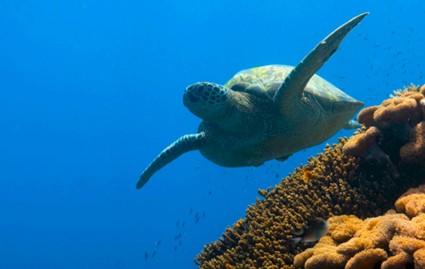
The Galápagos Islands are Ecuador's crown jewel. These volcanic islands sit 600 miles off the coast. To get there you have to take a flight from Quito or Guayaquil. Where the plane ride takes about two hours over open ocean.
Actually the islands inspired Darwin's ideas about how animals change over time. Each island has slightly different animals. Which finches on different islands have different beak shapes. These differences helped Darwin understand how species adapt to their environment.
Keep in mind that the government limits visitor numbers to protect the animals. Only about 200,000 people can visit each year. So book your ticket early. In addition remember most tours last 4-8 days and include meals and lodging on boats. But there are also day trips that work too if you stay on one of the main islands.
Each island offers different wildlife experiences. Such as the Española island has the only waved albatross colony in the world. These huge seabirds have wingspans over 8 feet. They return there every year to mate and raise babies.
On the other hand Isabela has penguins that live near the equator. These are the only penguins found north of the equator. Due to cold ocean currents keep the water temperature just right for them. And so you might also see flamingos in the island's salt lagoons.
In the same way, diving here ranks among the world's best. You might see hammerhead sharks swimming in large groups. Whale sharks visit certain areas during specific months. Colorful fish swim around underwater volcanic formations.
Also there is The Charles Darwin Research Station that teaches about efforts to save the giant tortoises. Scientists here breed baby tortoises and release them into the wild. You can see tortoises of different ages and learn about each species in The Tortuga island.
Savoring Ecuadorian Cuisine
The country is so small but the variety might surprise you.Try ceviche made with fresh fish and lime juice. The fish gets "cooked" by acid in the lime juice. With hot peppers that add spice while onions provide crunch. You will find the best seafood dishes in Coastal cities.
In the mountains, locro de papa warms you up on cold days. This thick potato soup uses different types of potatoes. Here in Ecuador grows over 100 potato varieties. Some are purple, others are yellow or white.
Besides the Yapingacho combines potato cakes with sausage and fried eggs. This hearty dish fills you up after long days of walking. Many restaurants serve it for breakfast or lunch.
Coastal areas serve encocado, a coconut milk stew with fish or shrimp. The coconut milk makes it creamy and slightly sweet. Usually there is rice that comes on the side to soak up the sauce.
In the Amazon, people eat unusual foods like chontacuro worms. These fat grubs live inside palm trees. They taste nutty when roasted. As well they have fish wrapped in leaves and cooked over open fires for a dish called maito.
Visit local markets for the full experience. In Otavalo Market you will find local snacks and handmade crafts. There are indigenous families who come from mountain villages to sell their goods. The market works best on Saturdays, it is because more vendors show up.
Quito's La Ronda district has street food vendors selling empanadas and sweet treats. For example, try pristiños, fried dough served with sweet syrup. Another popular treat is Helado de paila, ice cream made in copper pans using natural ingredients.
Unveiling the Mysteries of Peru
Peru stretches from the Pacific coast to the Amazon rainforest. The Andes mountains run down the middle, creating three distinct climate zones. This geography helped ancient civilizations develop different cultures and technologies.
Ancient people built incredible structures here over 1,000 years ago. They moved massive stones without wheels or metal tools. Many of their techniques remain mysteries today. These civilizations left behind art, textiles, and buildings that still amaze visitors.
Modern Peru keeps many old traditions alive. Like indigenous languages such as Quechua are still spoken daily. Moreover traditional clothing appears at festivals and markets. And old farming methods still work on mountain terraces.
Lima: The Culinary Capital of South America
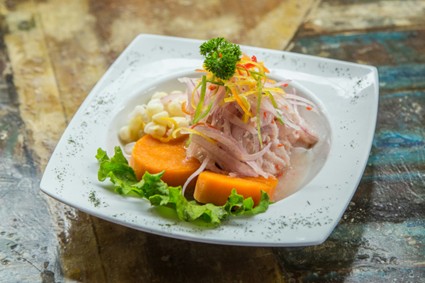
Your Peru trip starts in Lima. This coastal city of 10 million people loves food more than anything. The restaurants here have won international awards. Food critics from around the world come to eat here.
Try ceviche, Peru's national dish. Where every restaurant makes it slightly different. You can find that fresh fish gets "cooked" in lime juice with hot peppers. They also put red onions to add color and crunch. Finally sweet potatoes often come on the side.
Lomo saltado mixes Chinese stir-fry methods with Peruvian beef. This dish combines soy sauce with local peppers and onions. Also they had french fries mixed into the stir fry to make it uniquely Peruvian.
For dessert, have a suspiro a la limeña offers sweet caramel topped with fluffy meringue. The name means "sigh of the woman from Lima." The dessert is so good it makes people sigh with happiness.
Lima has world famous gastronomic tours that book months ahead. It has Central that focuses on ingredients from different altitude zones in Peru. Plus Maido mixes Japanese techniques with Peruvian ingredients. At last Astrid y Gastón helped start Lima's food revolution 20 years ago.
On the other hand street food offers cheaper but equally delicious options. You can try anticuchos, grilled beef heart on skewers. The meat gets marinated in spices and tastes better than it sounds. If you are seeking for sweet options picarones are sweet potato donuts served with molasses syrup.
At another point Lima mixes colonial buildings with glass towers. The historic center shows off Spanish colonial architecture from the 1500s. At Grand plazas you will find fountains and palm trees. Also Churches display gold decorations that survived earthquakes and wars.
At Costa Verde, you can enjoy ocean views and cliff-top walks. These coastal beaches run for miles along Lima's edge, they go from Peru to Ecuador. Where surfers catch waves below while joggers use the paths above. Here, restaurants serve fresh seafood with ocean views.
Journey to the Sacred Valley and Machu Picchu
The Sacred Valley holds Peru's most famous sights. The Urubamba River flows through the middle, providing water for ancient and modern farming. At an altitude of 3,350 meters above sea level, the Sacred Valley is in the heart of Cusco. All the greenery of Cusco's agriculture is fed by the Urubamba River. Which runs through the Cusco terrain.
The town below still uses streets laid out by Inca engineers 500 years ago. Where local families live in houses built on Inca foundations. Besides the water channels that incas built still carry fresh mountain water through the town.
Pisac offers great market shopping and impressive ruins. For example, the Sunday market fills the town square with color and sound. Here indigenous families sell textiles, pottery, and food. What's more the quality is often better than tourist shops in cities.
Pisac's ruins sit high above the town on a mountain ridge. Nearby stone buildings follow the natural curve of the mountainside. Bellow terraces for growing crops step down the steep slopes. Beyond that the views stretch across the entire Sacred Valley.
Machu Picchu sits at the end of the valley.This ancient city perches on a mountain ridge 2400 meters up. Often, morning clouds hide the ruins until the sun burns them away. As a result, the dramatic setting takes your breath away every time.
You can hike the Inca Trail or take a train ride to Aguas Calientes. The classic Inca Trail takes four days and three nights. You sleep in tents and carry your own gear. Also porters can carry most of your things for an extra fee.
The train option works better for people with limited time or physical challenges. Departing from Cusco or the Sacred Valley several times daily, trains provide flexible schedules. Meanwhile, the ride takes 3-4 hours through beautiful mountain scenery.
Sunrise over the ruins creates magical moments that photos can't capture. Be sure to get there early to watch the light slowly reveal the ancient buildings. Meanwhile, the changing light makes the stones seem to glow from within.
The site includes over 150 buildings connected by stone stairs and paths. Among them, some were homes, while others served as temples or storage areas. Notably, the famous Intihuatana stone was designed to track the sun's movement throughout the year.
Local guided tours give you stories about Inca history and beliefs. They also explain how the Incas built without metal tools or wheels. Moreover, the precision of the stonework still amazes modern engineers and architects.
Peruvian Landmarks and Adventure Trips
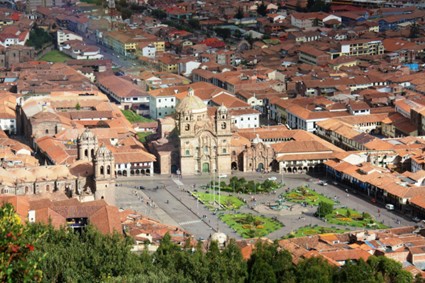
Peru has adventures for every taste and fitness level. Thanks to the country’s varied geography, you’ll find opportunities for many activities. Whether you’re a mountain lover, desert fan, or jungle explorer, you’ll discover what you’re looking for.
Trek the Colca Canyon, one of the world’s deepest canyons. This massive crack in the earth drops twice as deep as the Grand Canyon. Although the hike down takes several hours, the views are worth the effort.
Giant condors soar overhead on morning thermals. These huge birds have wingspans over 10 feet. They ride air currents without flapping their wings for hours. Additionally, early morning offers the best chance to see them flying
Try sandboarding in Huacachina oasis. This small green lake sits surrounded by huge sand dunes. Moreover, the dunes constantly shift in the desert wind. Sandboards work like snowboards but slide on sand instead of snow.
In addition, dune buggy rides add extra excitement to the desert experience. These modified vehicles climb straight up sand dunes, then race down the other side. Be prepared, as the rides get bumpy and fast.
The Nazca Lines puzzle visitors with their giant desert drawings. These huge images were made by removing dark stones to reveal lighter sand underneath. Some pictures show animals, others are geometric shapes.
You need a plane ride to see them properly. Small aircraft fly over the lines for about 30 minutes. Keep in mind that the flight can be bumpy, so take motion sickness medicine if you're sensitive.
Lake Titicaca sits higher than any other big lake in the world. The water is so high that some people get altitude sickness here. The lake straddles the border between Peru and Bolivia.
The Uros people live on floating islands made of reeds. These islands move around the lake with wind and currents. Meanwhile, families rebuild their islands constantly as the reeds decay and need replacement.
In the Amazon region, river cruises and jungle lodges let you see incredible wildlife. Boats navigate muddy rivers that wind through thick forest. At times, pink dolphins swim near the boats. Additionally, you have the Puerto Maldonado region at the Tambopata reserve.
Mountain treks like Ausangate show off snow peaks and colored lakes. This challenging hike takes 5-7 days at very high altitude. The vibrant turquoise lakes create surreal landscapes.
The Salkantay Trek offers another route to Machu Picchu through varied terrain. Unlike the classic trail, this alternative avoids the crowds. Along the way, you pass through cloud forests, high passes, and coffee farms.
Planning Your Intrepid Adventure
Good planning makes your trip better and safer. Since both countries require some preparation because of high altitude, climate, and cultural differences, start planning at least 3-6 months before you want to travel. Also, choose the right travel package in advance, especially for Machu Picchu.
Generally, the dry season from May to October works best for most activities. Weather stays clear in the mountains and Amazon during these months. As a result, rain is less likely to disrupt outdoor plans or make hiking dangerous.
However, mountain areas can be cold even during the dry season. Temperatures drop quickly after sunset at higher altitudes. Therefore, pack warm clothes even if daytime weather feels comfortable.
The Galápagos has its own weather patterns separate from mainland Ecuador. Therefore, check when to see specific animals because their behavior changes with seasons. For instance, sea lion pups are born at certain times. Similarly, whale sharks visit during particular months.
Keep in mind, peak season means crowds and higher prices everywhere. Popular sites like Machu Picchu sell out months in advance. As a result, book hotels and tours early, especially for June through August.
Alternatively, consider April or November for fewer people and still good weather. These shoulder months offer savings on hotels and tours. Usually, the weather is still good for outdoor activities.
Altitude affects most visitors to some degree. Cusco sits at 3350 meters above sea level. Consequently, many people feel short of breath or get headaches here. Thus, take it easy for the first day or two.
Best Time to Travel to Ecuador and Peru

A good itinerary balances must-see sights with enough time to enjoy each place. Otherwise, rushing between destinations leaves you tired and stressed. Therefore, plan for travel days and rest time between major activities.
Begin with three days in Quito. This gives you time to adjust to altitude and see the main sights. Additionally, take a day trip to Mitad del Mundo or Mindo Cloud Forest. Then, save energy for the Galápagos.
Fly to the Galápagos for a week of island hopping. Although this might seem like a long time, the islands are spread out. For example, islands like Santa Cruz offer different wildlife and landscapes. You’ll also want time to enjoy snorkeling and hiking.
Next, return to mainland Ecuador for Amazon time at an eco lodge. Two or three days gives you a taste of jungle life. During this time, you'll take guided walks, night tours, and maybe visit an indigenous community.
Cross into Peru by bus or flight. While the overland border crossing takes most of a day, it saves money. On the other hand, flying is faster but costs more. In either case, plan for a travel day.
Spend three days in Lima exploring different neighborhoods and trying restaurants. Don’t just stay in the tourist areas. Barranco has great nightlife and art galleries. Meanwhile, San Isidro offers upscale shopping and dining.
Head to the Sacred Valley for four days minimum. This includes travel time from Lima and a buffer day for altitude adjustment. Additionally, you'll want at least two full days for Machu Picchu.
Make sure to include at least two days at Machu Picchu itself. One day feels rushed for such an important site. Meanwhile, the second day lets you explore areas you missed or return to favorites.
Finally, end with the southern desert region and Nazca Lines. Ica and Nazca make good bases for desert activities. Although the flight over the Nazca Lines takes just a few hours, the experience lasts forever.
Add cultural events when possible. Inti Raymi is a festival in both countries that celebrates the sun god. These colorful celebrations show off local traditions and costumes. They happen around the winter solstice in June.
Balance adventure with rest time. Include easy days between hard activities. Your body needs time to recover from altitude, long hikes, and new foods.
Hot springs in Baños, of Ecuador offer relaxation after volcano viewing or adventure sports. The Sacred Valley has spa treatments that use local ingredients like coca leaves and quinoa.
Crafting Your Ecuador and Peru Travel Itinerary
Altitude matters more than most people expect. Both countries have destinations above 3000 mts. The thin air affects everyone differently. Some people feel fine while others get sick.
Take it slow when you arrive at high places. Don't plan strenuous activities for your first day. Drink lots of water and avoid alcohol until you adjust. Coca tea helps some people with altitude symptoms.
Spend a day or two at medium heights before going higher. This helps your body make more red blood cells. Gradual adjustment works better than jumping straight to the highest places.
Respect local culture and you'll have better experiences. Indigenous people have rich traditions that deserve respect. Don't treat them like tourist attractions or photo opportunities.
Ask before taking photos of people, especially in traditional clothing. Many people will say yes if you ask politely. Some might want a small tip for photos.
Learn basic Spanish or Quechua phrases. "Hola" (hello), "gracias" (thank you), and "por favor" (please) go a long way. Local people appreciate visitors who make an effort.
Stay healthy with simple precautions. Get needed shots before you go. Yellow fever vaccination is required for some jungle areas. Check with your doctor about other recommended vaccines.
Pack a basic first-aid kit with bandages, pain medicine, and stomach remedies. Altitude can cause headaches. New foods sometimes upset stomachs even when they're perfectly safe.
Use bug spray in the Amazon and coastal areas. Mosquitoes can carry diseases like dengue fever. Long sleeves and pants help too, especially during dawn and dusk.
Drink bottled water or water you've seen boiled. Ice in drinks can be risky in some areas. Stick to hot foods that are freshly cooked. Avoid raw vegetables unless you can peel them yourself.
Pack smart for varied climates. You'll experience everything from hot jungle to cold mountains. Layers work better than heavy jackets because you can adjust as needed.
Good hiking boots help on uneven terrain and stone steps. Many Inca sites have steep, uneven stairs that can be slippery when wet. Ankle support prevents injuries.
Sunscreen works overtime at high altitude where UV rays are stronger. The equatorial sun is intense even on cloudy days. Bring a hat and sunglasses too.
Rain gear helps during the wet season but can be useful anytime in the mountains. Weather changes quickly at altitude. A light rain jacket packs small but keeps you dry.
Be aware of the exchange rates for every country . Ecuador uses dollars while Peru uses soles. Prepare your bucket list in advance and enjoy the experience.
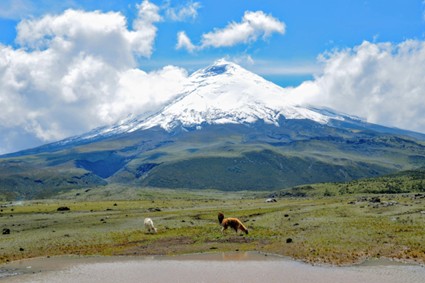
Embrace the Adventure
Ecuador and Peru offer life-changing experiences if you stay open to them. Ancient ruins tell stories of incredibly smart civilizations. Local people keep old traditions alive while adapting to modern life.
It takes time to really connect with places and people instead of just checking sites off a list. You can sit in plazas and watch daily life happen around you. Or you can talk to shopkeepers about their families and dreams.
Try new foods even if they look strange or scary. Some of the best meals come from taking chances on unfamiliar dishes. Sometimes street food often tastes better than expensive restaurants.
Talk to locals about their lives and beliefs whenever possible. These conversations often become the best travel memories long after you forget which museum you visited on which day.
Both countries will surprise you in unexpected ways. For instance, street art brightens city walls with political messages and cultural pride. Similarly, markets burst with colors and smells that assault your senses in the best way.
Meanwhile, mountain sunrises take your breath away with their beauty and thin air. Jungle sounds create natural music that changes throughout the day and night. Additionally, ocean waves provide a constant soundtrack along the coast.
Ultimately, come home with new ideas about the world and your place in it. These experiences change how you see other cultures and ways of living. In fact, they remind you how much beauty exists in different approaches to life.
The trip ends but the memories last forever. Although photos help preserve moments, your changed perspective matters more. Therefore, let these experiences guide future travels and life choices back home.
Check Our Suggested Tours:


